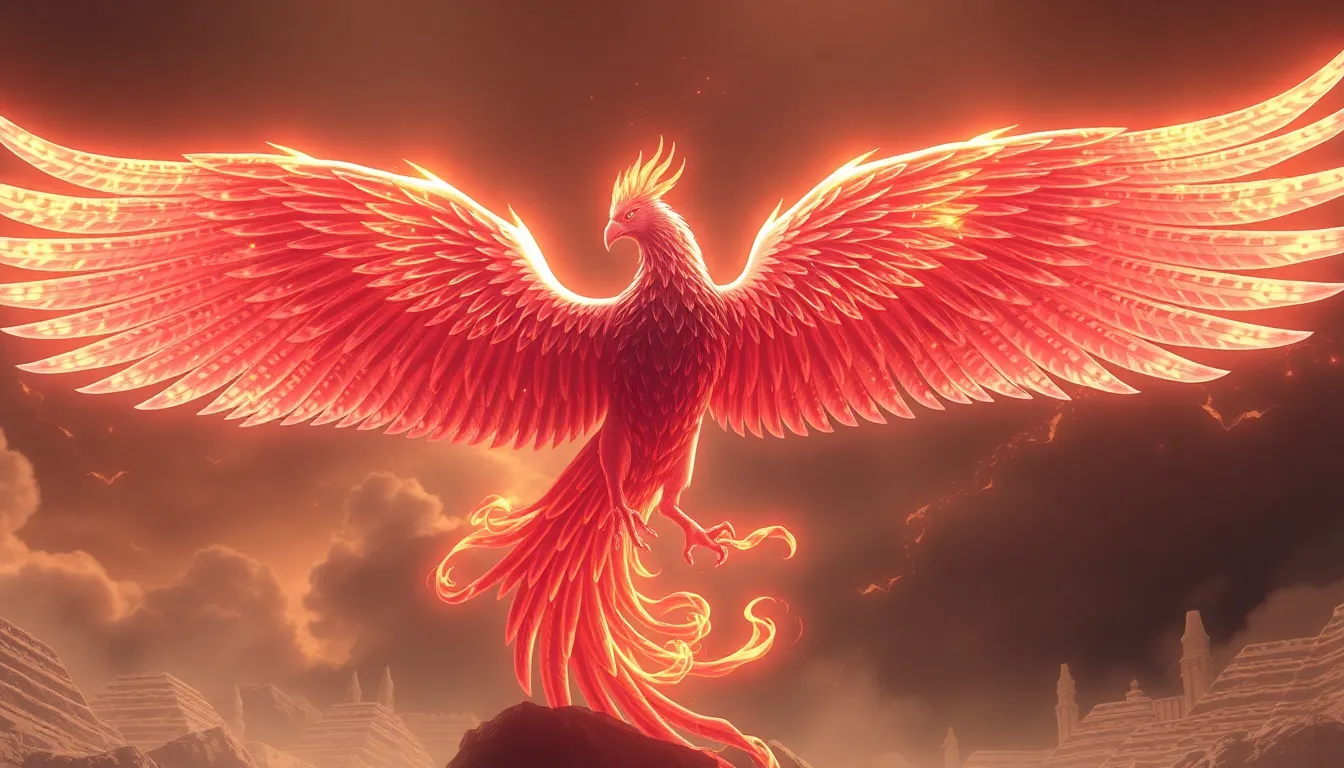The Legend of the Phoenix: Rebirth in Egyptian Mythology
I. Introduction to the Phoenix in Mythology
The Phoenix is a legendary bird that symbolizes immortality, rebirth, and renewal. Known for its magnificent plumage and vibrant colors, the Phoenix has captivated the imagination of cultures around the world. In Egyptian mythology, the Phoenix, often associated with the sun, represents the cycle of life, death, and resurrection, making it an essential symbol in their rich tapestry of beliefs.
Throughout various cultures, the Phoenix embodies the idea of rising from the ashes, and it serves as a powerful reminder of the resilience of life. This article delves into the historical roots of the Phoenix legend, particularly its significance within ancient Egyptian mythology.
II. Historical Origins of the Phoenix Legend
A. The earliest mentions of the Phoenix in ancient texts
The earliest recorded mention of the Phoenix can be traced back to ancient Greek and Roman sources. The Greek historian Herodotus described a bird that lived for five hundred years and then consumed itself in flames, only to be reborn from its ashes.
B. Connections to ancient Egyptian beliefs and practices
In ancient Egypt, the concept of the Phoenix is closely tied to the beliefs surrounding the sun and the afterlife. The Egyptians viewed the sun as a deity that died every night and was reborn each morning, a concept that resonates with the Phoenix myth. This connection illustrates the interplay between nature, divinity, and the cyclical nature of existence in Egyptian culture.
III. The Phoenix in Egyptian Mythology
A. Description of the Phoenix and its characteristics
The Phoenix, known as the Bennu in ancient Egyptian mythology, is often depicted as a large, beautiful bird resembling a heron or a stork, characterized by its radiant feathers of gold and red. The Bennu was said to emit a brilliant light, symbolizing the sun and the divine.
B. The Phoenix’s association with the sun god Ra and the cycle of life
In Egyptian mythology, the Phoenix is closely associated with Ra, the sun god. The Bennu represents the sun’s journey across the sky and its daily rebirth at dawn. This connection underscores the importance of the Phoenix in Egyptian cosmology, where the cycles of nature are seen as manifestations of divine order.
IV. The Cycle of Death and Rebirth
A. The life cycle of the Phoenix: birth, death, and resurrection
The life of the Phoenix is defined by its cycle of birth, death, and resurrection. After living for a specified period, the Phoenix builds a nest of aromatic wood, sets it ablaze, and is consumed by the flames. From the ashes, a new Phoenix arises, symbolizing renewal and the continuity of life.
B. Symbolism of rebirth in the context of Egyptian beliefs about the afterlife
In ancient Egyptian beliefs, the notion of rebirth was fundamental. The Phoenix’s cycle mirrored the Egyptians’ views on the afterlife, where the soul undergoes a transformation and is judged before entering the eternal realm. This parallel underscores the significance of the Phoenix as a symbol of hope, continuity, and the promise of life beyond death.
V. The Mythological Journey of the Phoenix
A. The Phoenix’s home in Heliopolis and its connection to the sun
The mythical home of the Phoenix is Heliopolis, a city revered in ancient Egypt as the center of sun worship. The name Heliopolis itself means “City of the Sun,” and it was believed to be the dwelling place of Ra. The significance of Heliopolis as the Phoenix’s abode emphasizes the bird’s strong connection to solar deities and its role in the cosmic order.
B. Key myths and stories involving the Phoenix in Egyptian lore
- The Creation Myth: In some versions of the creation myth, the Phoenix is said to have emerged from the primordial waters of chaos, symbolizing the birth of the sun and the inception of life.
- The Journey of the Sun: The Phoenix’s daily flight across the sky is likened to the sun’s journey, representing the eternal cycle of day and night.
VI. The Phoenix’s Influence on Egyptian Art and Culture
A. Artistic representations of the Phoenix in ancient Egyptian artifacts
The Phoenix, or Bennu, has been depicted in various forms of ancient Egyptian art, including sculptures, paintings, and jewelry. These representations often emphasize its beauty and divine qualities, showcasing its significance in religious iconography.
B. The Phoenix’s role in rituals and religious practices
The Phoenix played a role in various rituals, particularly those associated with the sun and the afterlife. Ceremonies honoring Ra often included references to the Phoenix, reinforcing its status as a symbol of renewal and eternal life.
VII. Legacy of the Phoenix in Modern Culture
A. The Phoenix as a symbol in contemporary literature and media
In modern culture, the Phoenix continues to inspire artists, writers, and filmmakers. It appears in various forms of literature and media, often symbolizing resilience, transformation, and the power of starting anew. The story of the Phoenix resonates with themes of overcoming adversity and finding strength in times of struggle.
B. Comparisons with other cultural depictions of the Phoenix
While the Phoenix is most famously associated with Greek and Egyptian mythology, other cultures also have their own interpretations of the Phoenix. For example:
- Chinese Mythology: The Fenghuang, often referred to as the Chinese Phoenix, symbolizes virtue and grace.
- Persian Mythology: The Simurgh is a mythical bird that embodies wisdom and healing.
VIII. Conclusion
In conclusion, the Phoenix holds a significant place in Egyptian mythology as a powerful symbol of immortality, rebirth, and the cyclical nature of life. Its connection to the sun god Ra and its embodiment of the afterlife reflect the deep beliefs of the ancient Egyptians regarding existence and renewal.
The enduring appeal of the Phoenix continues to inspire contemporary culture, where it serves as a beacon of hope and resilience. As we reflect on the myth of the Phoenix, we are reminded of the potential for renewal and the beauty of starting anew, transcending time and cultural boundaries.




